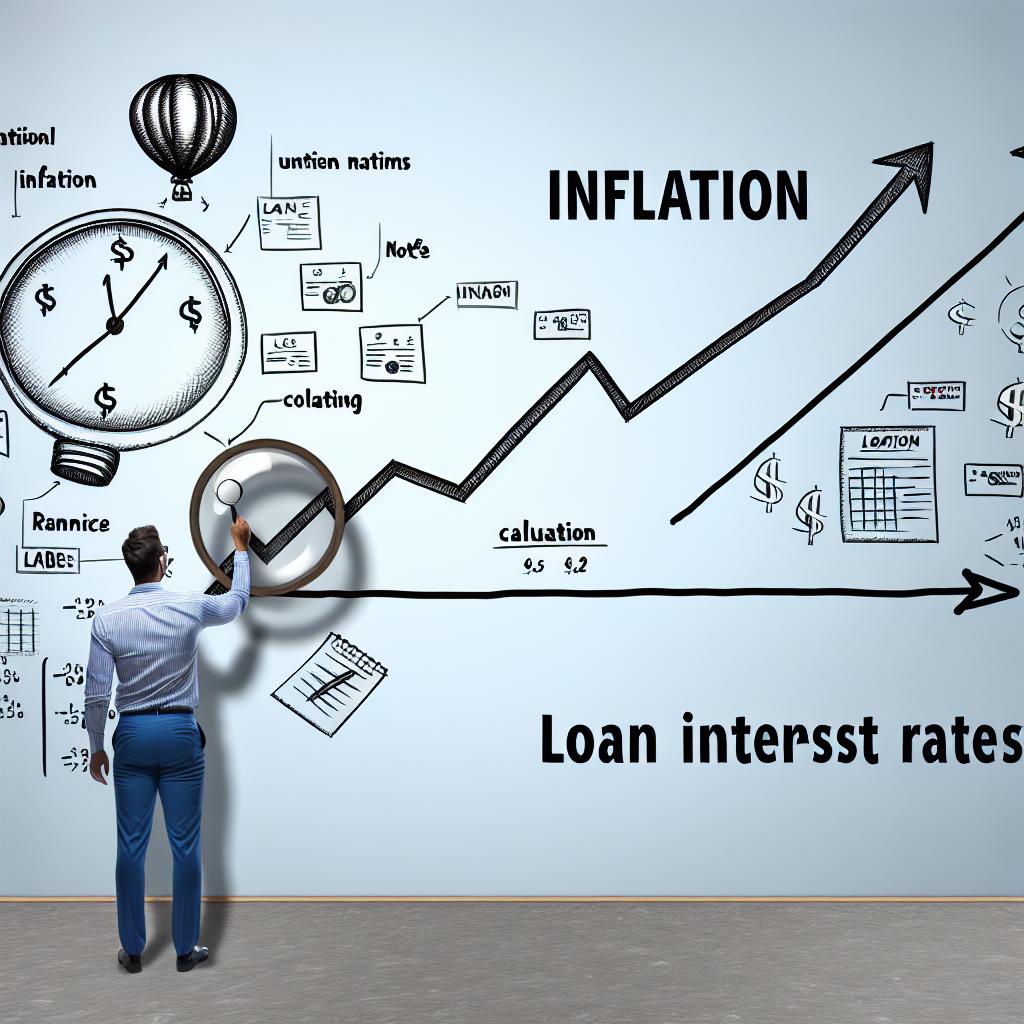The Relationship between Inflation and Loan Interest Rates
The relationship between inflation and loan interest rates is a pivotal aspect of economic dynamics, influencing both consumers and lenders. Inflation refers to the rate at which the general level of prices for goods and services rises, consequently eroding purchasing power over time. When inflation rates are high, the cost of financing through loans can be significantly affected. Understanding how inflation and interest rates interact is fundamental for individuals and policymakers navigating the intricate world of finance.
Understanding Inflation
Inflation is primarily driven by demand-pull factors, cost-push factors, and the built-in inflation theory. As prices increase, the purchasing power of money declines unless wages increase proportionately. Demand-pull inflation occurs when the demand for goods and services exceeds supply, leading to higher prices. Cost-push inflation, on the other hand, happens when the production costs rise, affecting the prices of final goods and services.
The built-in inflation theory suggests that past inflation influences current expectations about future inflation, creating a cyclical effect. Central banks, such as the Federal Reserve in the United States, monitor inflation closely to ensure it remains within a target range. Their strategies for managing inflation can include adjusting interest rates and using other monetary policy tools. For more information on how central banks manage inflation, refer to this resource on monetary policy.
Impact on Loan Interest Rates
The relationship between inflation and interest rates is typically direct. As inflation rises, lenders demand higher interest rates to compensate for the decreased purchasing power of money over the loan term. This direct relationship can be explained through two primary types of loans: fixed-rate loans and variable-rate loans.
Fixed-Rate Loans
In the context of fixed-rate loans, borrowers lock in an interest rate for the duration of the loan. When inflation increases, borrowers with existing fixed-rate loans benefit since they continue to pay the agreed-upon rate, which may be lower than current inflation-adjusted rates. However, new borrowers might face higher interest rates as lenders adjust to inflation expectations. In essence, fixed-rate borrowers are shielded from inflationary changes unless they opt to refinance their loans at current market rates, potentially introducing them to higher interest costs.
Variable-Rate Loans
Variable-rate loans, on the other hand, are more susceptible to changes in inflation. These loans have interest rates that can fluctuate over time, often tied to a benchmark rate like the LIBOR or the federal funds rate. As inflation rises, these benchmark rates are likely to increase, leading to higher costs for borrowers. This means that individuals who have variable-rate loans may find their loan payments increasing as inflation escalates, making it more challenging to manage financial obligations. Therefore, understanding the inherent risks of variable-rate loans is crucial, especially in an inflationary environment.
Central Bank Interventions
Central banks play a crucial role in managing the interplay between inflation and interest rates. By adjusting their monetary policy tools, they influence inflationary trends and interest rate levels. For instance, to curb high inflation, a central bank may increase interest rates, making borrowing more expensive and cooling economic activity. This deliberate increase aims to slow down spending and borrowing, thus decreasing demand-driven inflationary pressures.
Conversely, in times of low inflation or deflation, central banks might lower interest rates to stimulate borrowing and spending. This can lead to economic growth, as businesses invest more, and consumers are more inclined to make purchases. By doing so, central banks aim to maintain price stability and a healthy level of inflation that promotes economic activity without causing undue strain on the economy.
Conclusion
Inflation significantly impacts loan interest rates by influencing the cost of borrowing. As inflation rises, lenders adjust interest rates to account for decreased purchasing power, affecting both new and existing loans. Borrowers need to be aware of how inflation can impact their financial commitments and should consider these factors when choosing between fixed and variable-rate loans.
Central banks are instrumental in balancing inflationary pressures and ensuring stable economic growth. Their interventions provide a level of predictability and stability in the economy, guiding it through fluctuating inflation rates. Understanding the dynamics between inflation and interest rates is essential for borrowers and policymakers alike, as it helps in making informed financial decisions. As economic landscapes constantly evolve, staying informed about inflation trends and interest rate forecasts becomes increasingly crucial for maintaining financial well-being.

